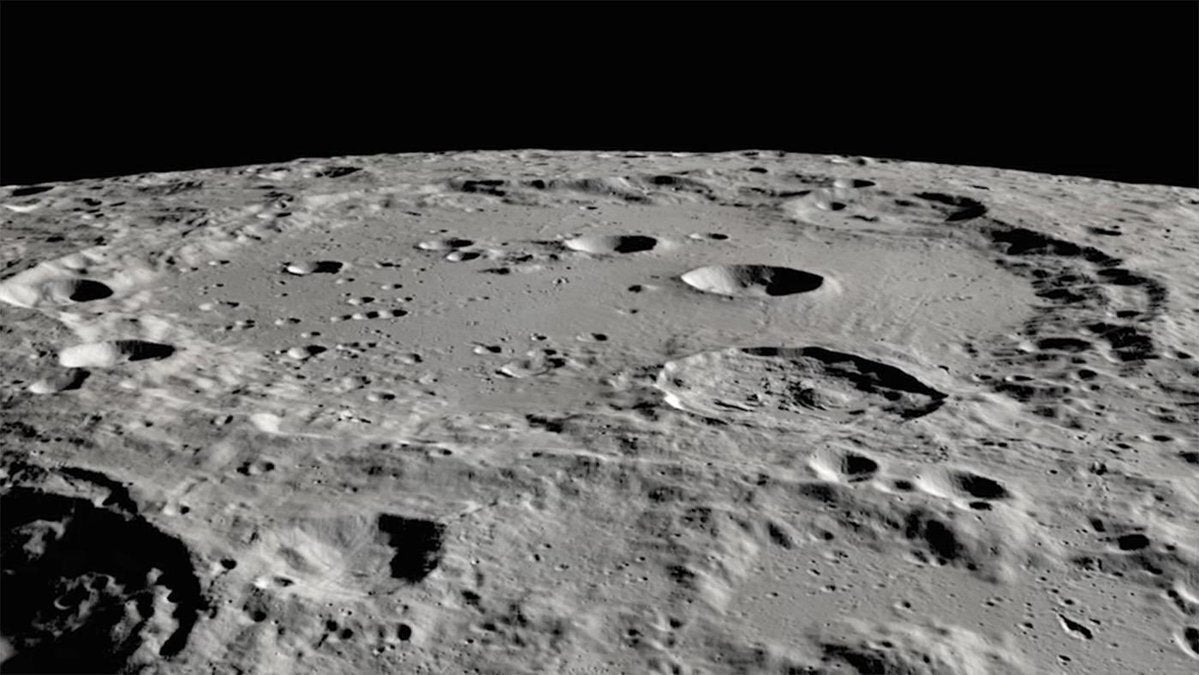
When researchers first noted evidence of water on the Moon, they also found permanently shadowed regions, areas that do not see the Sun and therefore are frigid, providing the perfect place to foster water ice. Experts suspect the areas have held trapped volatiles for up to billions of years. Observations from instruments on orbiters and probes found that the Moon’s north and south poles contain over 1.3 trillion pounds (600 billion kilograms) of water ice.
But a new study published in Science Advances found that there might be less water ice in these shadowed areas than previously believed. While most of the shaded regions on the Moon are around 3.4 billion years old, they contain deposits of water ice that are significantly younger. Such shaded areas on the Moon interest researchers because water locked up as ice could be used to create fuel and air, as well as sustain humans on the lunar surface in the future. NASA and other government agencies plan on sending rovers and humans to the Moon to further look into the ice on the shaded regions, according to a press release.
New measurements
The Moon’s rotational axis is nearly perpendicular to the direction of incoming sunlight, creating regions like the bottoms of craters on the lunar south pole that have not seen light for billions of years. These shaded areas on the Moon started to form about 4.1 billion years ago, when the satellite’s spin axis shifted, creating a high-angle tilt. When this tilt began to decrease due to the evolution of the Moon’s motion, the shaded regions formed at the poles.
Researchers from the Southwest Research Institute and the Planetary Science Institute used a simulation tool dubbed AstroGeo22 to calculate the Moon’s axial tilt over time. Those results, combined with surface height measurement data collected from NASA’s Lunar Orbital Altimeter Laser (LOLA) data, allowed scientists to estimate how the Moon’s shadowed regions evolved and create a map of the areas. By calculating how old the shaded regions are, researchers can determine how much water is sequestered there.
In 2009, scientists collected data on volatiles found in the crater Cabeus near the Moon’s south pole after deliberately smashing the Lunar Crater Observation and Sensing Satellite (LCROSS) into the surface. After the crash, the resulting plume revealed that the soil at the crater’s bottom consisted of 5.6 percent water ice. The new study sheds light as to when this crater may have become a shaded region. “Our work suggests that Cabeus crater became a PSR less than a billion years ago,” said Norbert Schörghofer, lead author of the study. “The various volatiles detected in the plume created by LCROSS indicate that ice-trapping continued into relatively recent times.” Schörghofer, who is a senior scientist at the Planetary Science Institute, continued: The age of PSRs largely determines the amount of water ice that could be trapped in the lunar polar regions.”
Decades of searching for water
Since the 1960s, planetary scientists have suspected that if water exists on the Moon, it might be hidden as ice in the permanently shadowed regions that never see the light of day. But when astronauts first took one giant leap onto the Moon during the Apollo missions, they found no evidence of water. For a long time, researchers wondered if the lunar surface was a dry abyss. It would be decades before researchers considered the possibility of water on the surface again.
During the 1990s, NASA’s Clementine mission and the Lunar Prospector Mission hinted at evidence of frozen water in the permanently shadowed regions on the Moon. Confirmation was lacking, however, because images taken by the Lunar Prospector were too blurry.
Finally, evidence of a watery past on the Moon arrived as specks of volcanic glass. A study published in 2008 in Nature revisited the first lunar samples returned by the Apollo missions and, with refined analysis, unveiled hydrogen trapped in the glass. This led the team to suspect water could have come from the Moon’s ancient volcanoes. That same year, India launched its first deep-space mission, Chandrayann-1, which held NASA’s Moon Mineralogy Mapper. Together, the spacecraft and instrument confirmed the presence of water ice on the Moon. The paper was more recently published in PNAS in 2018. Then in 2020, NASA’s SOFIA mission confirmed water even on sunlit areas on the Moon.
Looking to the Moon
NASA’s Artemis missions aim to transport humans for long-term assignments on the Moon. Because supplies are limited, living on the lunar surface will require ingenuity and smart use of resources found on the Moon’s surface, including water ice. And aside from supporting life and industrial use, water, ice, and other compounds found in the Moon’s shadowy regions will give scientists a look at the Moon’s early days and the early solar system.









